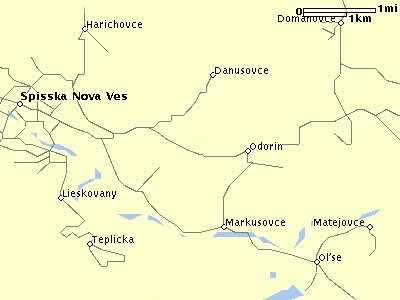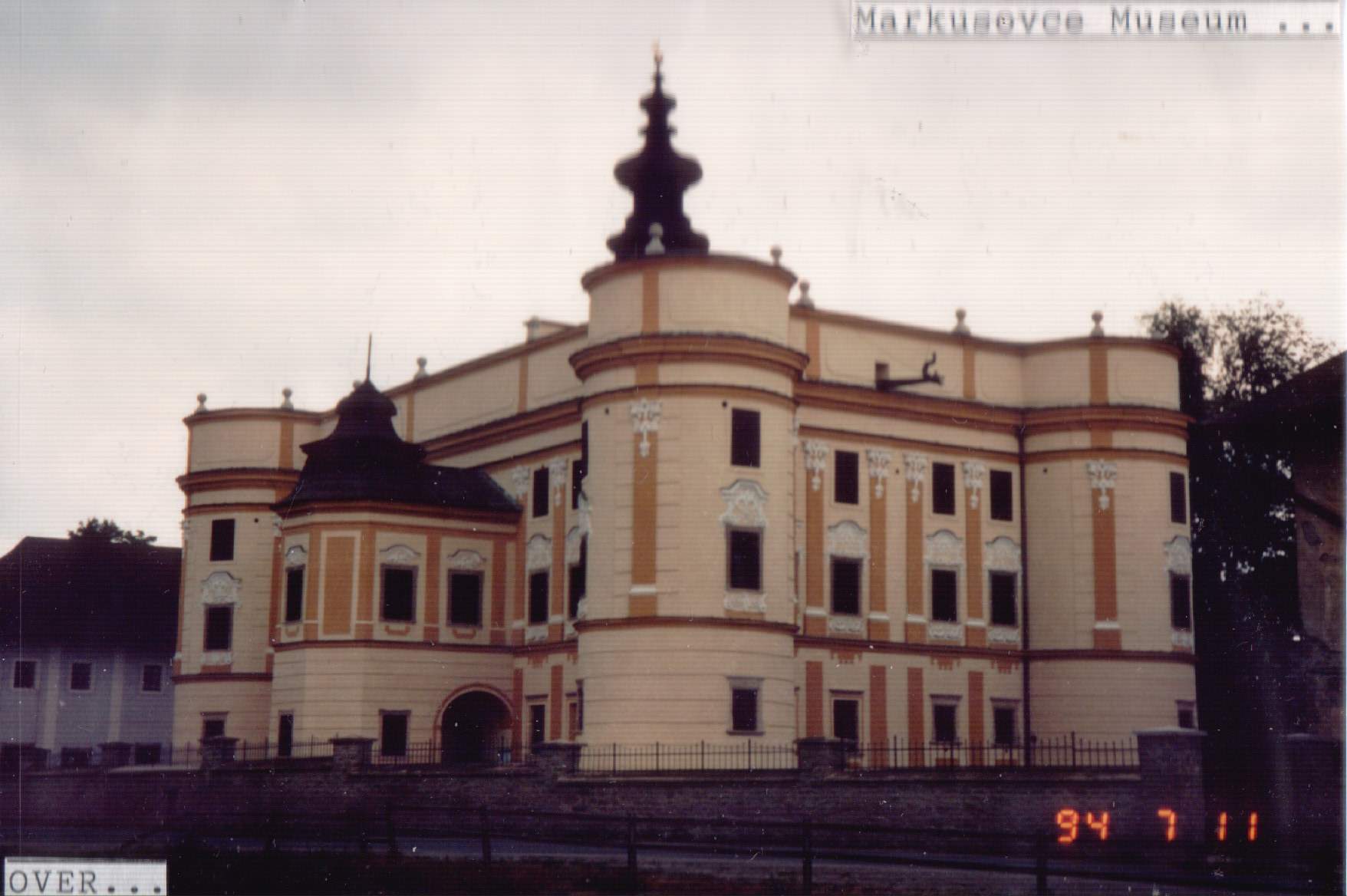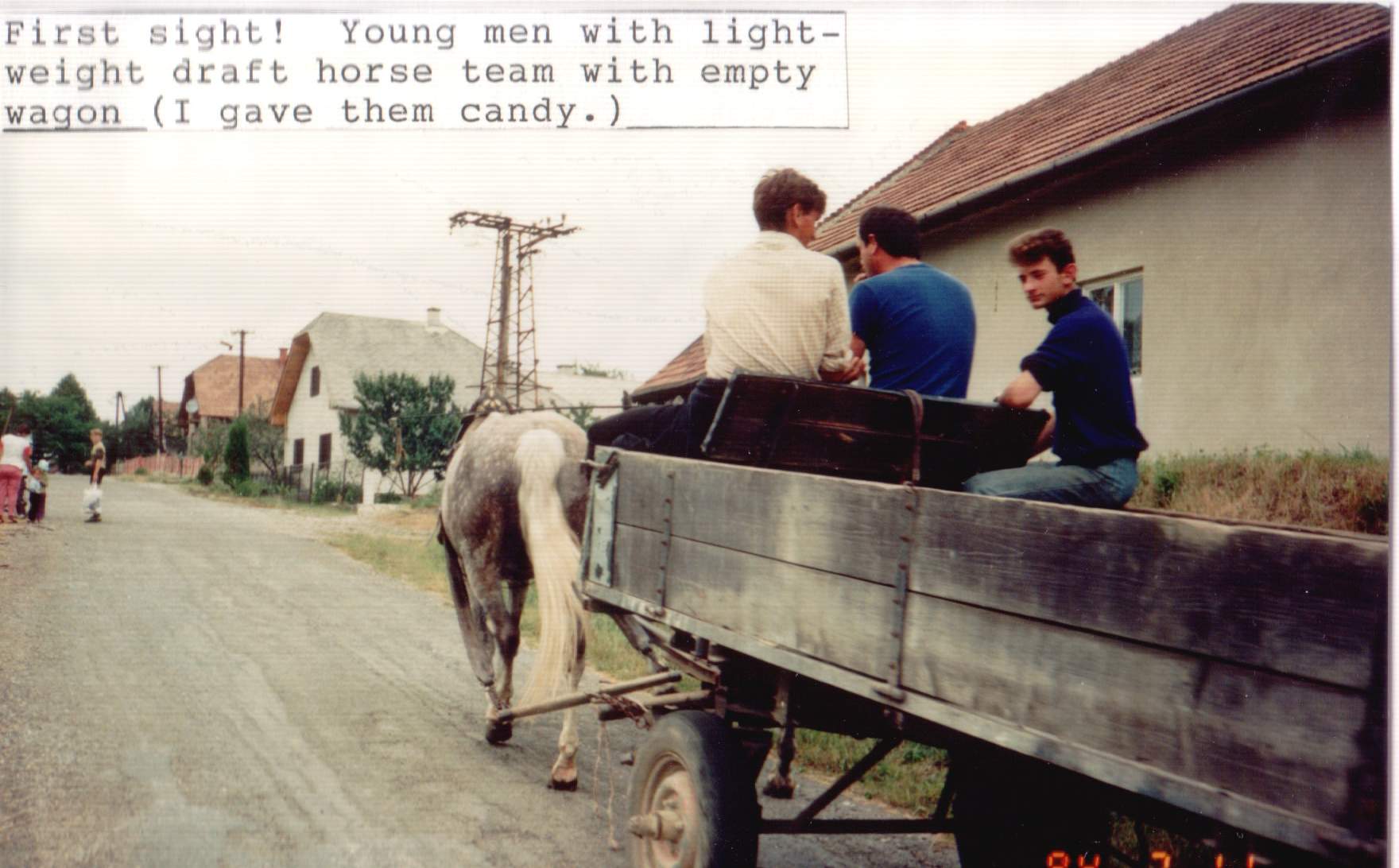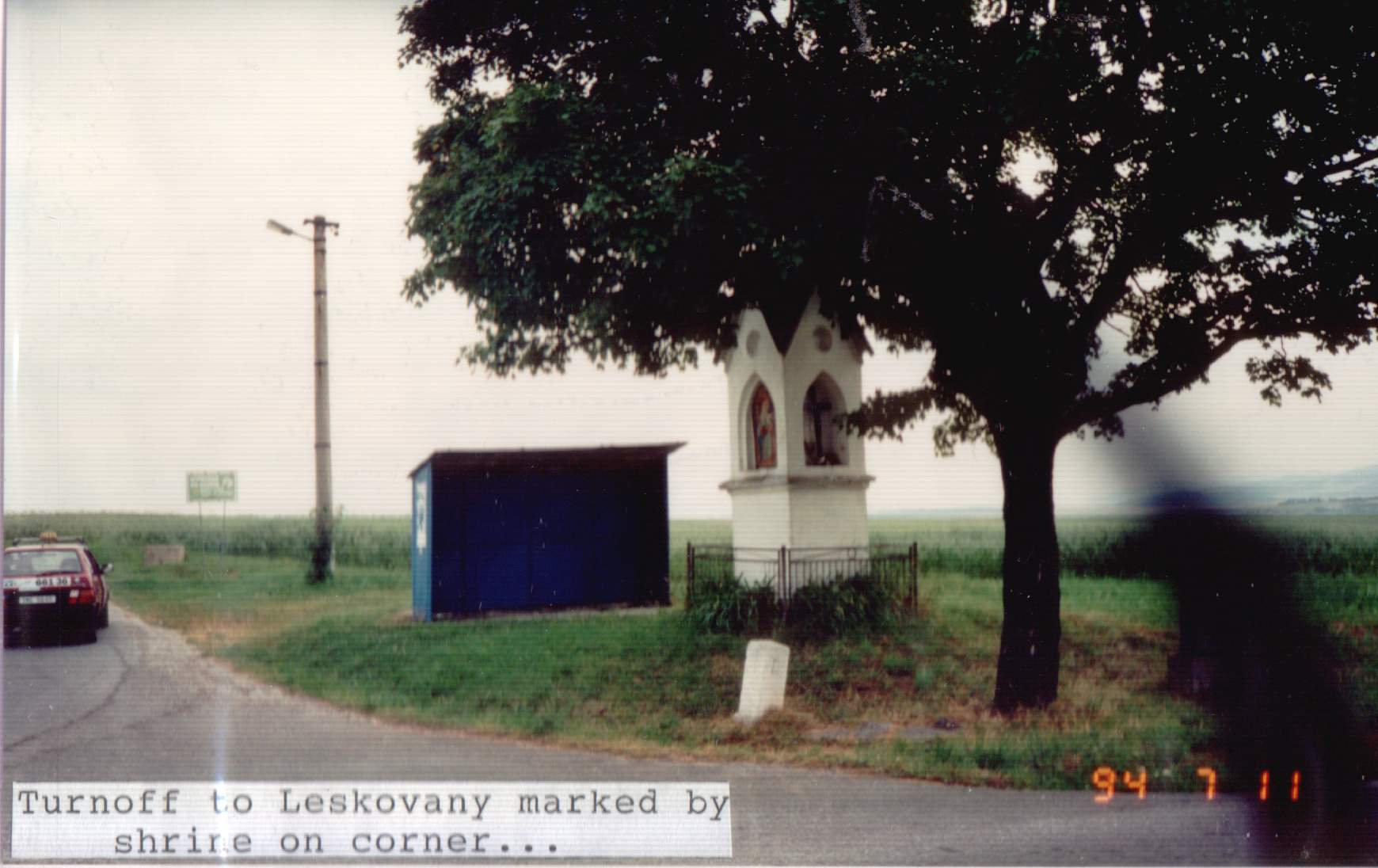
Welcome to Markusovce, Spis,
Slovakia
Do you know where you are? I sure didn't when I discovered
this was the birth village of my Great Grandmother Susanna Hruby
Buksar. Boy did I have a quick lesson in geography. Markusovce,
formerly known as Markusfalu and also as Markus-Csepanfalu is
located southeast of Spisska Nova Ves, Spis, Slovakia. I quickly
discovered that Lieskovany, the town my Great Grandfather Joannes
(John) Buksar was from is located nearby in the same church parish.
The surrounding towns are Lieskovany (Leszkofalva), Teplicka,
Rudnany (Koterbach), Zavadka, Ol'se, Odorin, Matejovce and Danusovce.
 Once I found the location of my Great Grandparents
birth villages it was off to the LDS library hoping to find church
records for the villages. I was in luck, the records for the Roman
Catholic Church in Markusovce were available for the years 1697-1896.
I eagerly ordered the films and was on pins and needles until
they arrived. I found my great grandparents John Buksar and Susanna
Hruby's marriage record, birth of their son John and daughter
Maria.
Once I found the location of my Great Grandparents
birth villages it was off to the LDS library hoping to find church
records for the villages. I was in luck, the records for the Roman
Catholic Church in Markusovce were available for the years 1697-1896.
I eagerly ordered the films and was on pins and needles until
they arrived. I found my great grandparents John Buksar and Susanna
Hruby's marriage record, birth of their son John and daughter
Maria.
Markusovce is located in the Spis Region of Eastern
Slovakia. The Spis region is situated just east of the High Tatras
and stretchs from the Hornad River north to the Polish border.
It's not exactly high on the list of tourist spots but it's not
the end of the earth either. This area contains some of Slovakia's
best preserved medieval towns. Between the 12th and 14th century,
Saxon settlers drifted into Spis (called Zips in German), enticed
there by the area's rich ore deposits and by royal offerings of
tax-free living. The Germans turned this area into one of the
richest areas in what is today Slovakia, eventually creating an
economic and defensive federation of 24 towns that enjoyed profitable
trading privileges handed down by the Hungarian Kings. The Germans
were expelled at the end of World War II, but their once-rich
medival towns remained, including Kezmarok and Levoca the walled
town. Nearby can be seen Spis Castle, the biggest and most impressive
castle in the Slovak Republic.

DNA A New Way to Trace your Ancestors
DNA is a great way to break that brick wall, in our Slovak family I've had my mtDNA tested and my male cousin had his Y-DNA tested. We are on our way to figuring out those dead ends. If you are interested check out Family Tree DNA services at Family Tree DNA. One of the great things about Family Tree DNA is that they sponsor Projects based on surnames and locations. By joining a project you can receive your testing at a reduced cost and correspond with others searching your surname or location.
If you are researching Eastern Slovakia and Poland Border village there is a project just for you, find out more at: Zamagurie Region DNA Project. The Zamaguirie Region straddles the eastern Slovak and southern Poland border. The following was taken directly from the website:
POLSKI SPISZ VILLAGES (using the Polish spelling) include:
Jaworzyna Spiska, Jurgow, Rzepiska, Czarna Gora, Trybsz, Lapsze Wysne, Lapszanka, Lapsze Nizne, Kacwin, Nowa Biala, Krempachy, Dursztyn, Frydman, Falsztyn, Niedzica and Lys nad Dunajcem. Also included in this project are the neighboring former Galician villages of Bialka Tatrazanka and Brzgi.
SLOVAK SPISSKE ZAMAGURIE (SPIS) VILLAGES) include: Majere, Spiskka Stara Ves, Matiasovce, Spisske Hanusovce, Velka and Mala Frankova, Havka, Zalesie (formerly Gibelly), Jezersko, Rel'ov, Cerveny Klastor, Lechnica, Haligovce, Velka Lesna, Velky Lipnik, Stranany, Slovenska Ves, Lendak, and Lesnica. Also included is the neighboring village of Wysne Ruzbachy.
Osturna is now included in this study.
The Group Administrator maintains a database from the villages which is a unique compilation of researched pedigrees. The database documents all descendants, their spouses, children etc. through the generations. The database contains 18,625 people represented by 2,394 + surnames (excluding variant spellings) and over 6,303 marriages! See the PROJECT NEWS section for a current surname list. The surnames listed above are only those that are presently being tested.
The source of vital statistics are actual church records from the ancestral villages obtained during six (6) trips to the Zamagurie Region, personal research in Slovak archives, professional genealogy services paid for by the Group Administrator as well as available LDS microfilms. In many cases (especially for the Polski Spisz villages), the records are only available in the village churches or church archives and are not yet available through the LDS.
K. Melis the group administrator is doing a great job organizing this group, please take the time to visit the site and consider having your DNA tested.

Finding Slovak Records
The Church of Jesus Christ Latter Day Saints (Mormons)
have wonderful family history centers. You can find the closest
center to you and even check out what records they have online.
You can find them at: Family
Search. Below I've listed the records for Markusovce and some
of the other Slovak towns in the same area.
Roman Catholic Parish Registers:
Markusovce (includes Cepanovce, Lieskovany, Teplicka,
Rudnany, Porac: #1733642, #1739643, #1739644, #1739645
Domanovce: #1739901, #1739902, #1739903
Novaveska Huta (Iglo Huta): #1791543, #1791545, #1739841, #1739842
Odorin (includes Jamnik, Danisovce): #1739661, #1739662, #1739663

Markusovce Parish Registers
The Markusovce records have provided records of many
of my ancestors. Recently I decided to work on extracting baptisms
from the microfilms, so I've created a new webpage with these
records. Click on the link below to visit these pages. I have
created tables for each year that I have extracted, eventually
I will move on to marriages.
Extracted Markusovce Records
If you happen to be searching for someone with one
of the names found in my surname pages, please contact me at Lisa Baker, I'd love
to hear from you.
Below are some pictures sent to me by Janet Kozak Crosby, her sister Fran took at trip to Markusovce, Slovakia in 1994 and returned with some wonderful pictures of the area.






A great site I found with history and photos of Markusovce
can be found at: Markusovce
History and Pictures

History of Slovakia
In my search for my families Slovakian roots, I began
to study the Slovak Republic's history. Slovakia has an interesting
past, until 1993 it existed as a separate state only from the
time the Nazis created it in 1939 until it was overtaken in 1945.
Earlier in it's history, Slovakia was part of the Great Moravian
Empire until the end of the ninth century. It was conquered by
the Magyars in the tenth century, and for the next thousand years
it was under either Hungarian or Habsburg rule.
Prior to the Great Moravian Empire, Slovakia's history
is mingled with that of the Czech lands. Sometime around 500 B.C.
Celtic tribes began wandering into the Czech lands. A tribe called
the Boii, drew the attention of Rome and the area they settled
received the Latin appellation of Boiohemum, later translated
into German as Böhmen, English as Bohemia. About the 5th
century, during the Migration of Nations, the first Slavic tribes
moved into the Slovak and Moravian lowlands and into the Bohemian
basin, driving out the Germanic tribes who replaced the Celts.
The Slavs were soon followed by the mighty Avars, a tribe of Turko-Tartar
origin, who came from present day Hungary. Under the leadership
of Samo, a Franconian merchant, the Slavs united crushing the
Avars. Samo went on to build the first western Slavic empire.
When Samo died around 659 AD the empire fell apart.
From the years 830-907 AD the Great Moravian Empire
appeared. It was ruled first by Mojmir I and then Rostislav. They
succeed in conquering neighboring lands and the empire spanned
across a great deal of Central Europe, including Moravia, Bohemia,
Silesia, Slovakia, southeastern Poland, northern Hungary, and
parts of eastern Germany. Rostislav was responsible for bringing
Christianity to the empire, it was at his request the Byzantine
Emperor in Constantinople (and not the pope in Rome) dispatched
a mission to Moravia. Two Greek brothers by the names of Cyril
and Methodius arrived in Moravia in 863 bringing a Bible translated
into Old Church Slavonic, an artificial language based upon a
southern Slavic dialect that was readily understood by the different
Slav tribes in the empire. For the first time the Slavs had acquired
a written language. Unfortunately, Svatopluk, Rostislav's nephew,
ended the Old Church Slavonic liturgy when he ousted his uncle
and allied himself with the Latin-based Catholic Church.
The Great Moravian Empire began to break up when it's
tribes started squabbling among themselves. The Czechs broke from
the empire and swore allegiance to the Eastern Franconia King
Arnulph, then the Magyars (Hungarians) invaded in 907 and captured
most of Slovakia. The empire crumbled and the stage was set for
the next period of Czech and Slovak history. It is here that the
Czech and Slovak history depart from each other.
Slovakia having lost its Czech allegiance, was attacked
by the Poles from the east and the Magyars from the south. The
Magyars had siezed all of Slovakia by 1018 and quickly settled
in as warlords over a Slovak peasantry, sealing the fate of Slovakia
for the next millennium as a part of the Hungarian Kingdom. In
the 13th century Tatar attacks from the east left Slovakia and
Hungary in ruins. The Magyars under the Arpad dynasty, regrouped
and proceeded to build an economy by inviting German miners, and
craftsman to found and develop town in Slovakia such as Banska
Bystrica and Levoca.
In 1526 following the Battle of Mohacs, the Hungarian
crown was given to the Austrian Hapsburg, Ferdinand I. Ten years
later the Ottoman Turks sacked the Hungarian captial of Buda (of
the modern day Budapest). The capital status fell to Bratislava,
giving Slovakia a much-needed cultural and economic boost. When
the Hapsburg and Polish forces expelled the Turks from Buda in
1683, Bratislava lost its capital status, as Buda once again became
the seat of Hungarian rule. For the next century, Slovakia remained
a land of feudalism in the Hungarian Kingdom, with the Slovaks
playing the role of serfs to their Magyar lords.
From 1800-1913 Slovakia was passed by the Industrial
Revolution. The country remained mostly agrarian, which kept a
Slovak middle class from forming. The 1848 revolution in Central
Europe drove the Hapsburgs from the Hungarian Kingdom for a brief
period. The Hapsburgs regained Hungary in 1849 with the help of
the Russians Tsar's army. During this time serfdom was finally
abolished in Slovakia. Despite the abolition of serfdom, the Slovaks
remained essentially second-class citizens. Then in 1867, Austria
had to submit to a dual monarchy and grant Hungary equal status
under the newly-formed Austro-Hungarian Empire. This forced the
Slovaks to endure a harsh Magyarization, in which Hungarian alone
became the official language in Slovak schools. Additionally,
crops began to fail and hunger set in, creating a situation that
by 1914, had compelled 20 percent of the Slovak population to
emigrate to the United States and Canada.
My family fell among these people who left their homeland
searching for a better life. My Great Grandparents John and Susanna
Hruby Buksar emigrated to Fayette County Pennsylvania in 1882
and 1889. I can only imagine the struggle they over came and the
heartaches they must have felt leaving behind family, knowing
they would probably never meet again.
 If you've discovered that you have Slovak roots there
are several places on the internet you can go to begin your search.
Slovakia - Great Pages with tons of data!
Slovak
Republic at Rootsweb
Old Hungary Bookstore -Maps and Books
The Carpatho-Rusyn Database
If you've discovered that you have Slovak roots there
are several places on the internet you can go to begin your search.
Slovakia - Great Pages with tons of data!
Slovak
Republic at Rootsweb
Old Hungary Bookstore -Maps and Books
The Carpatho-Rusyn Database

Copyright © 2000 by Lisa
Baker - All rights reserved.
Back to Baker Roots







